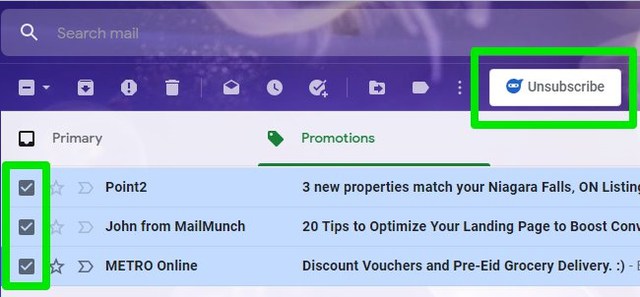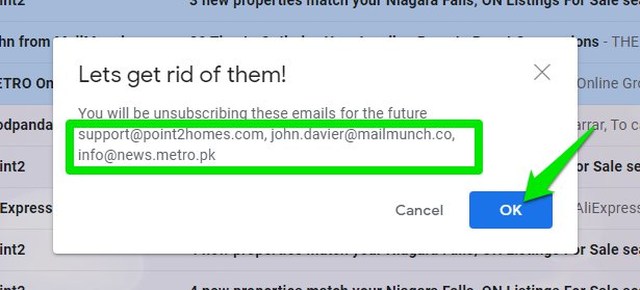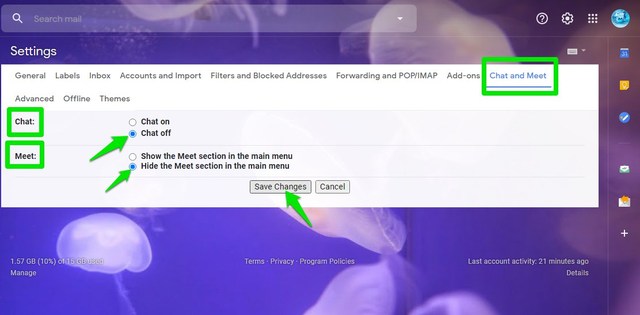Read the full article at AskVG.com
via AskVG https://ift.tt/30gCMvX
Tech News is a blog created by Wasim Akhtar to deliver Technical news with the latest and greatest in the world of technology. We provide content in the form of articles, videos, and product reviews.
It can be quite cumbersome if you need to open dozens of links one by one. If you deal with multiple links often, then you might be interested in getting a multiple URL opener tool. Thankfully, you can easily do this right inside your Chrome browser using a simple Chrome extension.
In my experience, there are two instances where you need to open URLs in bulk. Either you need to open multiple links on a page quickly, or have a list of URLs that you would like to open at a particular time — like before starting work. Therefore, I have selected 2 multiple URL opener Chrome extensions that will help in both of these instances.
Linkclump lets you open multiple links on a page by simply highlighting them. The extension works using a keyboard shortcut and predefined rules, so you should go to its options first to customize it. In the options, click on the “Edit” button under the “Actions” section.

By default, it uses the “Z” key+left mouse button to start the highlighter to highlight URLs. You can change the key binding here if you are already using the Z key for something else.

You can also change the default action to open the links in a new tab or a new window. Although unrelated, you can also choose to bookmark or copy links in bulk using this extension.

There are also a bunch of advanced options like exclude links with specific words, manage delay between opening links, and manage links opening order. There is a “smart select” feature as well that is supposed to exclude less important links. I honestly don’t know what algorithm it uses to differentiate between important and less important links, but for me, it opened up all the links that were selected. If you found this feature useful, do let me know in the comments. I am currently keeping it disabled to have full control.

To open multiple links on a page, simply hold the Z key (default) and click and drag the left mouse click to highlight all the links. The identified links will be highlighted in red and when you will leave the mouse click, all of them will open.
Tip: If you change your mind while highlighting, instead of undoing the highlight, just leave the keyboard shortcut key and the URLs will not open when you will leave the click.
Bulk URL opener lets you create a list of URLs that you can open with a single click. You can create multiple lists and manage them right from the extension button. When you will click on the extension button, it will automatically create a list of all the open tabs. This is very useful if you need to create the list out of currently opened tabs.

To create a list, add your URLs per line in the text box and click on the “New List” button at the bottom. On the next page, you can give a name to the list and save it.

All your lists can be accessed from the “Your saved lists” section. And you can edit them any time you like, or even permanently delete them.

You can also click on the gear icon to access extension settings. There are a bunch of options to customize your experience, such as adding delay to new tabs, managing non-URLs, import/export lists, and much more.
To bulk open URLs, just load the list and click on the “Open Links” button to immediately open all of them in your browser.
Both of these extensions work fine for their intended purpose, just pick the one according to your need. Better yet, you can install both the extensions to use a simple trick to create URL lists easily. The trick is to use the copy feature of Linkclump extension to copy URLs in bulk and then paste them in the Bulk URL Opener to quickly create a list. You can also open links on pages with Linkclump and then let Bulk URL Opener create a list out of them.
Let us know in the comments if you found these extensions to bulk open URLs useful.
The post 2 Bulk URL Opener Chrome Extensions To Bulk Open URLs appeared first on Gtricks.
There is no way to tell before subscribing whether a newsletter will be useful or just annoying spam emails to buy their products. If you subscribe to newsletters often, then there is a good chance your inbox is filled with useless emails. Although you can manually unsubscribe from emails, but it can be quite tiring to do it one by one when you have dozens of subscriptions.
No worries though, with the help of a simple Chrome extension you can get rid of all the unwanted newsletter emails and prevent future emails coming from the specific addresses. In this post, I’ll show you how to do it.
Unroll.me used to be one of the most popular services for this purpose, but their user data selling scandal made many users doubt their service and started looking for alternatives. To serve a similar purpose, HelpNinja has recently introduced a Chrome extension that can help get rid of newsletters without putting your data at risk.
Unsub by HelpNinja works on the browser side to manage your emails, so no data is transferred to the servers. However, it doesn’t actually unsubscribe you from emails, instead, it achieves a similar goal but in a different way. When you unsubscribe using this extension, it simply creates a new label and moves all the emails from the said newsletter to this label; both current and future emails.
You aren’t actually unsubscribed from the newsletter, but it will never come in your way. In my opinion, it’s actually better than unsubscribing. This way, you can access these emails in the future just by visiting the label where they are saved. Furthermore, this also hides all the previously saved emails, so it also cleans up your main inbox.
If you are up for it, let’s see how you can use this Chrome extension to unsubscribe from emails.
HelpNinja offers this Chrome extension completely free, unlike their other services. Just install Unsub in Chrome and follow the below instructions:
Open Gmail and you will see a new “Unsubscribe” button at the top. Just click on the “Select” checkbox next to the emails from which you want to unsubscribe and then click on this “Unsubscribe” button.

A prompt will show up listing all the email addresses from which you will be unsubscribing.

When you will confirm this prompt, all the emails will be moved to a new label called “HNGUnsubscribed” that you can find under the “More” option. Future emails will go to this label as well.

Unsub is a great unsubscribing tool if you are concerned about privacy as it simply redirects the emails to a different label instead of reading email content and unsubscribing directly. As long as you are not looking into the new label, all the annoying newsletters are as good as gone. I should also mention that you can use this extension to redirect emails from regular users as well.
The post Tired of Newsletter Spam in Gmail? Here’s How To Bulk Unsubscribe Emails appeared first on Gtricks.
If you need to compare data or need to revisit a set of data often in Google Sheets, then it can be quite cumbersome to scroll back to it every time. Fortunately, Google Sheets lets you lock one or more rows and columns to keep them on-screen even if you scroll to a different section on the sheet.
You can do this on both the desktop and mobile apps of Google Sheets and in this post I will show you how to do it.
First, you should know that you can only freeze rows from top to bottom or columns from left to right, you can’t choose rows or columns from the middle. Therefore, all the required data must be in the starting rows/columns of the sheet. Let’s see how you can freeze rows and columns in the Google Sheets desktop version.
Click on the last row (if there is more than one) that you would like to freeze to select it.
Now click on the “View” menu at the top and hover your mouse cursor over the “Freeze” option.
A bunch of options will open to freeze both rows and columns. You can select 1st or 2nd row/column, or all the rows/columns before the row/column you have selected.

Once the right selection is made, you can scroll and see those rows/columns will stay in view. Furthermore, you can also freeze both rows and columns at the same time and they will all stay in view. A gray line will distinguish between frozen and regular rows/columns.

When you are done, you can unfreeze rows/columns by going to the View > Freeze menu again and selecting “No rows” or “No columns” options.
On the Google Sheets Android or iOS app, it’s actually even more easy to freeze a row or column. Here’s how:
Open the sheet and tap on the “Sheet” tab at the bottom.
Now scroll down and you will see two options “Freeze rows” and “Freeze columns”. Click on the upward and downward arrow next to them to select the number of rows and columns you want to freeze. A gray line will indicate the selected rows and columns.

You can decrease or increase the number as needed, and you can unfreeze them by setting the number to 0.
Locking rows and columns in one place is definitely a great way to keep content in check as you work on the sheet. Although be careful when selecting too many rows or columns to freeze as your screen must have enough space to show both frozen data and regular data. You can always adjust screen size if you really need to select a lot of rows and columns to freeze.
The post How To Freeze a Row or Column in Google Sheets Desktop and Mobile App appeared first on Gtricks.
Signing out of Gmail on Android isn’t too difficult, just sign out of the Google account on your phone and you will sign out of Gmail too. However, this also signs you out of other Google apps like Chrome, Play Store, Maps, and Google Assistant, etc. If you only want to sign out of Gmail while staying signed in to other apps, then there is a workaround.
Of course, you can’t actually sign out of Gmail individually, but you can get rid of all the synced emails and prevent new emails from reaching your account. Basically, this will empty your account and keep it like that so it will be similar to signing out.
Before I tell you how to do it, it’s important to know that your account email will stay logged in and anyone else can interact with it as possible. This also including re-syncing emails to get access to your emails. Therefore, you can only use this workaround to keep your account clean in case you don’t want to see your emails on that phone.
First, you need to disable email syncing for that specific account on your phone. Here’s how:
Go to the phone “Settings” and tap on the “Users & accounts” option here.
Now tap on the Google account for which you want to disable syncing and then tap on “Account sync” on the next page.

Here from the list, turn off the toggle next to Gmail.

This will prevent all future emails from automatically syncing to this phone. If you want to get rid of currently stored emails as well, then you will have to delete all the data of the Gmail app. Here’s how:
Go to “Settings” again and tap on “Apps”
Here open up the Gmail app and tap on the “Storage” option.
Now tap on “Clear Data” and confirm the prompt to clear all Gmail data.

This will reset your Gmail app and it will sign in again when you will open the Gmail app. However, there will be no emails in the app. You will get a notification that auto-sync is disabled, but you can dismiss it easily.
I know this isn’t a very reliable method to sign out of Gmail, but it should work fine to keep an account clear while you use another one. If you don’t want to use Gmail on your phone at all, then you can also completely disable the Gmail app from the app details section.
If you have any questions, just ask in the comments below.
The post How To Sign Out of Gmail on Android Without Signing Out of Other Apps appeared first on Gtricks.
Google recently introduced Google Chat and Google Meet replacing Hangouts as the enterprise video conferencing and chat solution. Just like Hangouts, Chat and Meet also reside in the left sidebar of Gmail taking considerable space. However, not all people will find these services useful. If you are like me and only use Gmail for email, then these features taking up extra space in your sidebar must be annoying you too.
Thankfully, it’s actually really easy to hide both Chat and Meet features right inside Gmail and it’s actually beneficial to do it. Today, I will show you how to hide both Chat and Meet sections in the Gmail sidebar.
Before I tell you how to hide Chat and Meet from Gmail sidebar, I am going to tell you the benefits you will get for hiding them. Personally, I have found two benefits that make it really worth hiding both of these features if you are not using them.
First, it opens up more space to view other labels that are hidden in the “More” button. Usually, the labels under the “More” button open as a scrollable window. However, after hiding Chat and Meet, it fully opens up in its place which makes it very easy to navigate without having to scroll.
Secondly, Gmail uses less system resources to run. From my very rough estimation, Gmail uses approximately 60,000KBs less resources after hiding both of these features. This is almost 25% less load on your system and makes Gmail a bit smooth on older systems. If you are low on system resources, then hiding Chat and Meet is a great solution.
With the addition of these features, Google also added a new tab in the settings to control these features. You can hide both of these features from there. Here’s how:
From the main Gmail interface, click on the “Gear” icon at the top-right corner and select “See all settings” option from it.

Now move to the “Chat and Meet” tab. Here select “Chat off” in the Chat section and “Hide the Meet section in the main menu” in the Meet section. Afterward, click on “Save changes” to apply the changes.

Gmail will refresh again and move you to the main interface where both Chat and Meet sections will be removed from the sidebar.
Do keep in mind that these changes will only hide Chat and Meet in the Gmail interface. You can still fully use both of these services by going to their respective websites, Chat and Meet. And if you ever like to get back any of these features in the Gmail interface, then follow the same instructions to undo the changes and enable them.
The post Why You Should Hide Chat and Meet Sections in Gmail And How To Do It appeared first on Gtricks.
In this article, we regularly share information about latest and important security updates and security advisories issued by software compa...